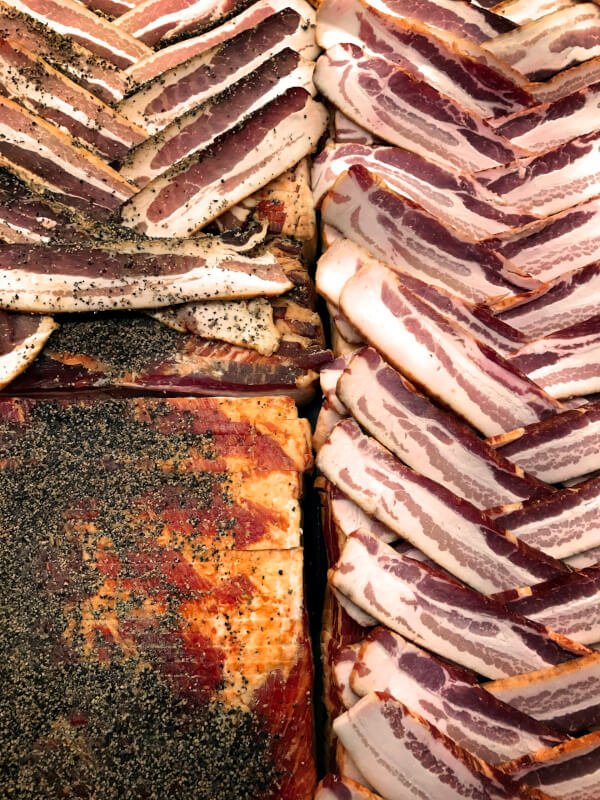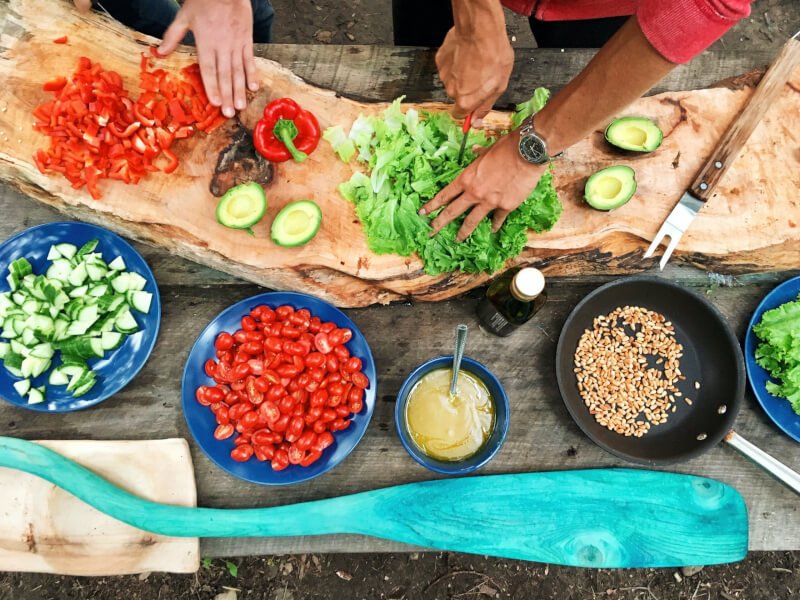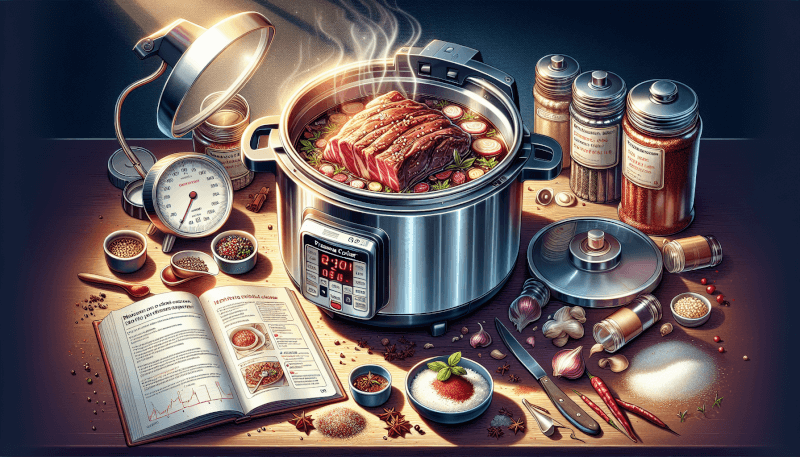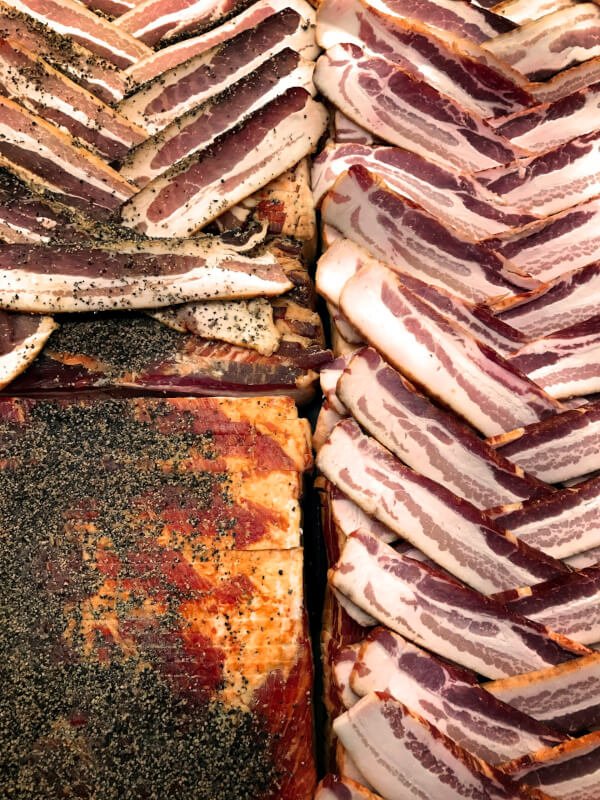If you’re eager to step up your culinary game and make delicious, tender meat dishes in a fraction of the time, then cooking meat in a pressure cooker is the answer you’ve been looking for. With its ability to cook meat quickly while retaining all the flavors and nutrients, a pressure cooker can be a game-changer in your kitchen. However, to ensure perfect results every time, it’s important to keep a few tips in mind. From selecting the right cuts of meat to adjusting cooking times, this article will guide you through the secrets to cooking meat in a pressure cooker like a pro. Get ready to impress your taste buds with succulent, juicy meat that falls apart with a gentle touch.

Choosing the Right Cut of Meat
When it comes to cooking meat in a pressure cooker, one of the most important factors to consider is the cut of meat you choose. Not all cuts are created equal, and certain cuts are better suited for pressure cooking than others.
Consider the Cut
Opting for tougher cuts of meat is generally the best choice when using a pressure cooker. Cuts such as chuck roast, brisket, or short ribs are ideal as they have more connective tissue and collagen, which breaks down during the pressure cooking process. This results in a tender and flavorful finished product. So, next time you’re at the butcher or grocery store, look for cuts that are known for their toughness.
Opt for Tougher Cuts
Tougher cuts of meat are not only more suitable for pressure cooking, but they also tend to be more affordable. These cuts are often less expensive because they require longer cooking times to become tender using traditional cooking methods. However, with the help of a pressure cooker, you can achieve the same tender result in a fraction of the time.
Avoid Meats with Excess Fat
While some fat is necessary for flavor and moisture, it’s important to avoid cuts of meat that have excessive amounts of fat. The excess fat can lead to an overly greasy finished dish and can even cause the pressure cooker to exceed its recommended limits. Look for cuts with a moderate amount of fat marbling for the best results.
Preparing the Meat
Properly preparing the meat before placing it in the pressure cooker is essential for achieving delicious and consistent results.
Trim Excess Fat
Before cooking, take a few moments to trim any excess fat from the meat. While some fat adds flavor and moisture, too much fat can result in an overly greasy finished dish. Use a sharp knife to carefully trim off any large chunks of fat, but be sure to leave a moderate amount for flavor.
Season the Meat
To enhance the flavors of your meat, be sure to season it before cooking. A simple combination of salt, pepper, and your favorite spices or herbs can go a long way in adding depth and complexity to the final dish. Don’t be afraid to experiment with different seasonings to suit your taste preferences.
Let the Meat Rest
Allowing the meat to rest for a few minutes before cooking can help it retain more moisture and flavor. This step is especially important if you’ve just taken the meat out of the refrigerator. Allowing it to come to room temperature before cooking can result in more even cooking and a juicier end result.

Using the Pressure Cooker
Knowing how to properly use your pressure cooker is key to achieving the best results when cooking meat.
Add Sufficient Liquid
Most pressure cookers require a certain amount of liquid to create steam and build pressure. Be sure to follow the manufacturer’s instructions and add the recommended amount of liquid to your recipe. Common choices include broth, water, or even wine, which will impart additional flavors to the meat.
Follow Recipe Guidelines
Pressure cookers often come with recipe books or guidelines for different types of meats. It’s important to follow these guidelines closely to ensure that you’re cooking the meat for the appropriate amount of time and at the correct pressure level. Deviating from the recipe without understanding the implications can lead to either undercooked or overcooked meat.
Utilize Proper Cooking Times
Different cuts of meat require different cooking times in a pressure cooker. It’s important to adjust your cooking time based on the specific cut you’re using. Tougher cuts typically require longer cooking times, while more tender cuts may only need a fraction of the time. Keep this in mind and consult a reliable source or recipe for the correct cooking times.
Managing Cooking Time
To achieve perfectly cooked meat in your pressure cooker, it’s important to consider various factors that can affect the cooking time.
Calculate Cooking Time
Before you begin cooking your meat, it’s helpful to have a rough idea of how long it will take. This can vary depending on the size and thickness of the meat, as well as the desired level of doneness. As a general rule of thumb, you can estimate 15-20 minutes per pound of meat in a pressure cooker. However, it’s always best to consult a recipe or trusted cooking resource for specific cooking times.
Account for Natural Release
When using a pressure cooker, there are two methods for releasing pressure: natural release and quick release. Natural release involves allowing the pressure to dissipate on its own, which can take anywhere from a few minutes to longer. It’s important to factor in this natural release time when calculating the overall cooking time for your meat.
Adjust for Frozen Meat
If you’re using frozen meat in your pressure cooker, it’s important to adjust the cooking time accordingly. Frozen meat will take longer to cook compared to thawed or fresh meat. As a general guideline, you can add 50% more cooking time when using frozen meat. This extra cooking time ensures that the frozen meat is thoroughly and evenly cooked.

Cooking Techniques
When cooking meat in a pressure cooker, there are a few techniques you can employ to enhance the flavors and textures of the final dish.
Searing the Meat
Before placing the meat in the pressure cooker, consider searing it to develop a rich, caramelized crust. Searing helps to lock in the natural juices and adds depth of flavor to the meat. Heat a bit of oil in a skillet over high heat, then brown the meat on all sides until it develops a golden crust. This extra step can greatly enhance the overall taste of your pressure-cooked meat.
Browning the Meat
Similar to searing, browning the meat can add a beautiful color and texture to the final dish. To brown the meat, remove it from the pressure cooker after cooking and transfer it to a hot skillet or under a broiler. Allow it to cook for a few minutes on each side until a desirable brown crust forms. This additional step can elevate the appearance and taste of your pressure-cooked meat.
Deglazing the Pot
After cooking the meat in the pressure cooker, there may be flavorful browned bits stuck to the bottom of the pot. These bits, known as fond, can add depth and complexity to sauces or gravies. To make use of these delicious flavors, simply deglaze the pot by adding a liquid, such as broth or wine, and scraping the bottom to loosen the bits. Incorporate this liquid into your desired sauce or gravy for an extra boost of flavor.
Monitoring Cooking Progress
To ensure your meat is cooking properly in the pressure cooker, it’s essential to monitor its progress and make necessary adjustments.
Use the Pressure Cooker Gauge
Most pressure cookers are equipped with a pressure gauge or indicator that shows the pressure level inside the cooker. Pay attention to this gauge and make sure it is within the appropriate range for your recipe. This will ensure that the meat is cooking at the correct pressure, resulting in tender and flavorful results.
Check the Internal Temperature
While pressure cooking is a convenient method of cooking meat, it’s still important to check the internal temperature of the meat to ensure it is fully cooked. Use a meat thermometer to measure the internal temperature, making sure it reaches the recommended safe temperature for your specific type of meat. This step is crucial for food safety and to ensure that your meat is cooked to perfection.
Inspect the Meat Texture
In addition to checking the internal temperature, it’s also important to inspect the texture of the meat. Ideally, the meat should be tender and easily shredded or cut with a fork. If it still feels tough or chewy, continue cooking for a few more minutes and check again. The texture of the meat can be a good indication of its doneness and overall quality.

Best Practices for Safety
Using a pressure cooker requires some caution to ensure a safe cooking experience. By following these best practices, you can prevent accidents and maintain a safe cooking environment.
Ensure Proper Venting
Before opening the pressure cooker, make sure that all the pressure has been released and the cooker is not under any pressure. This can be determined by checking the pressure indicator or gauge, which should show that the pressure has fully dissipated. Attempting to open the pressure cooker prematurely while it still contains pressure can be extremely dangerous. Always follow the manufacturer’s instructions for proper venting and release of pressure.
Avoid Overfilling the Pressure Cooker
It’s important to avoid overfilling the pressure cooker to prevent any potential safety hazards. Overfilling can lead to clogged vents, excess pressure buildup, and potential spillage. Follow the manufacturer’s guidelines on maximum fill levels and be mindful of the recommended capacity for different ingredients. By using the appropriate amount of ingredients and leaving enough space for expansion, you can ensure a safe and effective cooking process.
Never Open the Lid Under Pressure
Opening the pressure cooker while it is still under pressure is a recipe for disaster. The pressure inside the cooker can cause a sudden release of steam and hot liquid, which can cause serious burns or accidents. Always wait until the pressure indicator or gauge shows that the pressure has been fully released before opening the lid. This extra precaution ensures your safety and prevents any mishaps in the kitchen.
Resting and Serving the Meat
After the meat has finished cooking in the pressure cooker, it’s important to properly handle and serve it for the best results.
Allow the Meat to Rest
Giving the meat a few minutes to rest after cooking allows the juices to redistribute and the flavors to settle. This resting period helps to ensure that the meat stays tender and juicy when it is sliced or shredded. Simply remove the meat from the pressure cooker and let it rest on a cutting board for about 5-10 minutes before serving.
Transfer Meat to Serving Platter
Once the meat has rested, it’s time to transfer it to a serving platter. Use tongs or a large fork to carefully lift the meat, being mindful of any residual liquid or juices. Place the meat on a clean platter or cutting board and proceed with serving or further preparation, depending on your recipe.
Retain Juices as Gravy or Sauce
The liquid remaining in the pressure cooker after cooking the meat can be used to create a flavorful gravy or sauce. Simply strain the liquid to remove any solids, then simmer it on the stovetop to reduce and concentrate the flavors. This rich and flavorful sauce can be served alongside the meat or drizzled over the top for an extra burst of taste.
Troubleshooting Tips
Sometimes, things don’t go as planned in the kitchen. If you encounter any issues while cooking meat in a pressure cooker, here are some troubleshooting tips to help you salvage the dish.
Release Pressure Manually
If the pressure cooker doesn’t naturally release pressure after the recommended cooking time, you may need to manually release it. Follow the manufacturer’s instructions to safely release the pressure manually. This can often be done by turning the pressure release valve to the venting position. Keep in mind that this method can cause a rapid release of steam, so exercise caution and use oven mitts or tongs to protect your hands.
Fix Overcooked Meat
Overcooking meat in a pressure cooker can result in dry and tough meat. If you find that your meat has turned out overcooked, don’t despair. You can try adding some additional liquid such as broth or sauce to help rehydrate the meat. Make sure to simmer it on low heat for a few minutes to allow the liquid to penetrate the meat and restore some moisture.
Adjust Seasonings if Necessary
If you find that the flavors of your pressure-cooked meat are lacking, it’s not too late to make adjustments. Taste the meat and assess its seasoning. You can add more salt, pepper, or other spices to enhance the flavors. Remember to add seasonings in small increments, tasting as you go, to avoid overseasoning the dish.
Experimenting with Flavors
One of the joys of cooking with a pressure cooker is the ability to experiment with different flavors and ingredients. Here are some ways to elevate the taste of your pressure-cooked meat.
Marinating the Meat
Prior to cooking, consider marinating your meat to infuse it with additional flavors. A marinade can consist of various ingredients, such as herbs, spices, oils, and acidic liquids like vinegar or citrus juice. Allow the meat to marinate for a few hours or overnight in the refrigerator to maximize the flavor absorption. Then, proceed with pressure cooking as usual for a delicately seasoned and flavorful result.
Infuse with Aromatics
Aromatics such as onions, garlic, ginger, and herbs can add complexity and depth to your pressure-cooked meat. Consider adding these ingredients to your recipe to enhance the flavors. You can sauté them before adding the meat to the pressure cooker, or simply place them in the cooking liquid to infuse the meat with their fragrant notes.
Embrace Seasonings and Spices
Don’t be afraid to experiment with different seasonings and spices to create a unique flavor profile for your pressure-cooked meat. Whether you prefer bold and spicy flavors or subtle and aromatic notes, there are endless possibilities when it comes to seasoning your meat. Explore different spice blends, dried herbs, and even condiments to create a dish that suits your personal taste preferences.
By following these tips and techniques, you can confidently cook meat in a pressure cooker and create delicious and tender dishes every time. Whether you’re a pressure cooking novice or an experienced home cook, these guidelines will help you make the most of your pressure cooker and elevate your meat dishes to new heights. So grab your pressure cooker, choose the perfect cut of meat, and get ready to enjoy flavorful and succulent meals in no time!


